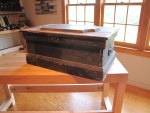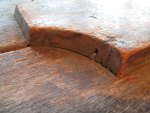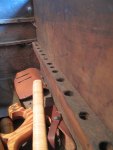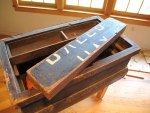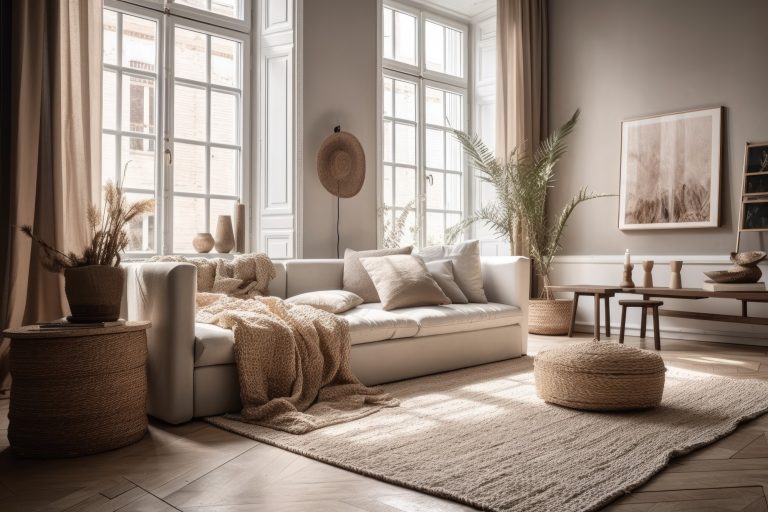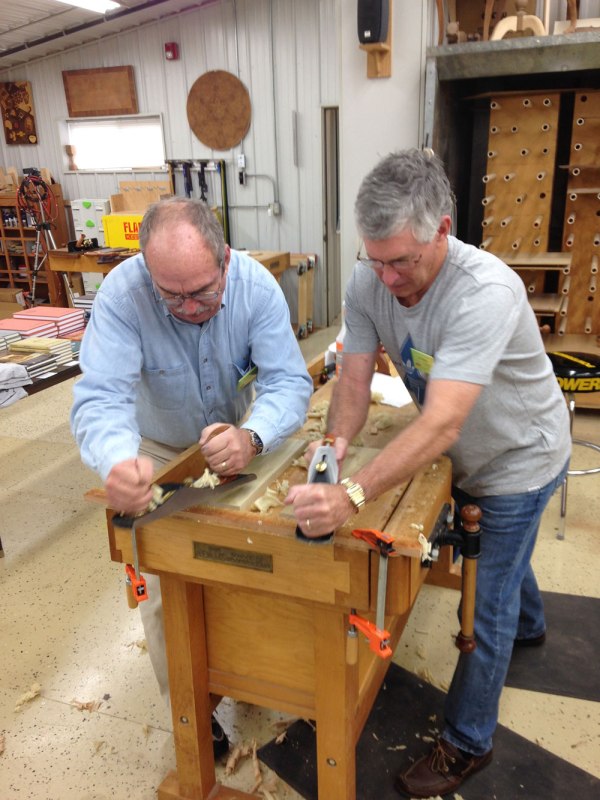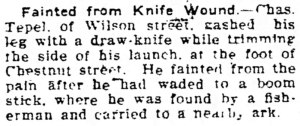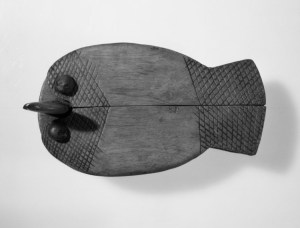A Tool Chest at the Lie-Nielsen Shop –
In “The Anarchist’s Tool Chest,” I make the case that a traditional-scale tool chest is the right size and shape to hold all your tools and make them easy to get to.
Not everyone believes me. That’s OK. But after working out of a traditional and large tool chest since 1997, I am confident in my opinion.
The one thing I don’t like about my large tool chest has nothing to do with my tool chest. It has to do with my car. I have a small two-door hatchback. And while I can haul an incredible amount of tools and lumber in that car, the hatch is too small to receive my chest.
This makes me grumble because I’d like to work out of a chest when I’m traveling. Right now I wrap all my tools in old socks and pile them in some luggage. I am regularly mocked for it by students and other instructors.
So I’ve been meaning to design a traveling tool chest that fits in my car and holds a working set of tools. I’ve been looking at historical examples of chests, and this week I found one that I am quite fond of.
It’s owned by Thomas Lie-Nielsen of Lie-Nielsen Toolworks, and it was hiding below a bunch of tools in his personal shop next to his home. The interesting curved detail on the lid caught my eye, and after we finished shooting a DVD and a couple videos for YouTube, I dug the chest out and went over it with a tape measure.
There are some really great things about this chest, and some disappointments. Here’s the good and the bad.
1. Good: The size is about right for my tools and my car. It’s 33-3/4” long, 15” high and 20” deep. It has two sliding trays, a tool holder and even a small sawtill. I think this chest would work for me.
2. Bad: The carcase is nailed together. The skirts are mitered and nailed. Still, it has survived a long time.
3. Good: The top panel is very attractive.
4. Bad: The coved detail on the top is just nailed on. It’s not a raised panel.
5. Good: The sliding tills are made from some great rough material. The bottom of one of the tills is an old painted sign.
6. Bad: The lower tray is locked into the chest by the runner system.
7. Good: The chest has survived a lot of abuse.
8. Bad: A big section of the bottom is rotted. And is that a mouse hole?
9: Good: The proportions of the chest are very pleasing. And the thing is painted black. Sweet.
10. Bad: I’d have to redesign this chest to suit my taste in joinery and function.
I made a nice detailed sketch of the good parts. So that’s a start.
— Christopher Schwarz

